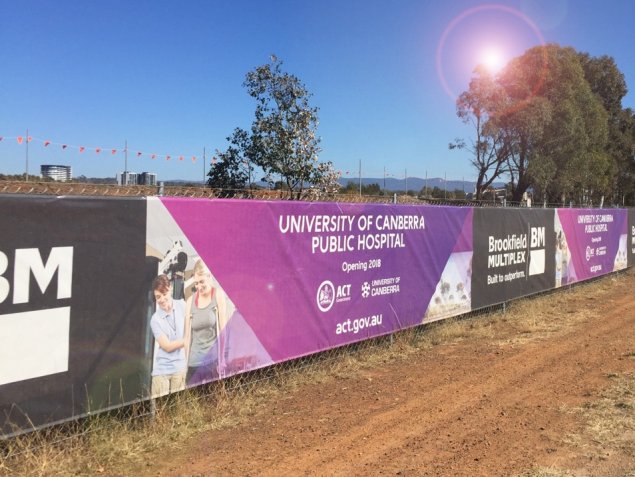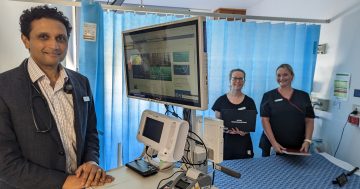
About twelve months ago, my daughter developed swelling and redness in one of her eyes. We were lucky enough to get an appointment with our local GP the same day, but were shocked to be told that we needed to go to Canberra Hospital emergency admissions straight away.
Our GP was concerned that our daughter might have orbital cellulitis – a rare but very serious condition that requires immediate attention. Nine hours and an exhaustive number of tests later, we returned home with the all-clear. Every single staff member was professional and sympathetic and although it turned out to be a false alarm, it was definitely a case where being safe rather than sorry was the right approach.
Aside from being grateful for having access to a health system as good as Australia’s (thank you Gough Whitlam), the whole episode made me more appreciative of the complex role of hospitals.
People think mostly of the front line services of emergency, intensive care, and maternity wards when they imagine a “hospital”. But hospitals are also responsible for administering a huge network of specialist tests and care for patients. Many of these patients have complex conditions that may take days, months, or even years to treat – and particularly in the case of elderly patients, there may be no realistic chance of a permanent cure.
My daughter’s experience with the hospital is known as acute care: a serious episode where hospital attention is required immediately. After discharge there was only a minimal likelihood that she would need to return.
On the other hand, sub-acute care is where “the patient’s need for care is driven predominantly by his or her functional status rather than principal diagnosis”. Put simply, the goal is long-term improvements in quality of life even if no simplistic “cure” is possible.
The UC Public Hospital currently under construction and due to open in 2018 is such a sub-acute facility. It is being designed to offer:
- General rehabilitation
- Psychiatric rehabilitation
- Geriatric evaluation and management
- Mental health day services
Its location at the University of Canberra will provide additional opportunities for integrating teaching, training and research to improve short and long term patient outcomes.
Sub-acute facilities are a comparatively new innovation but are vital for a well-functioning hospital system since they free up capacity in acute facilities. They are not “second class hospitals”, but facilities that are optimised to deliver long-term rehabilitation and care for conditions that are not life-threatening.
The ideal model for sub-acute care is a multidisciplinary assessment by specialists, leading to individual care plans that ultimately lead to the patient being discharged into their home environment to receive supported care. As our population in Canberra ages, the need for high-quality sub-acute care has never been greater. Executed well, sub-acute care delivers “responsive, patient centred, flexible and holistic care” with benefits to both staff and patients.
It’s really important to correct this misconception about the role of the UC public hospital given the misleading criticisms made by the Canberra Liberals back in 2015. For sub-acute care, the goal is quality of life, not admission to a bed. Putting a sub-acute patient in a hospital bed should really only be done where no other option is available.
Have you had to go through rehabilitation or another form of sub-acute care? What was your experience like?
Kim Fischer is an ACT Labor candidate for the seat of Ginninderra in the 2016 ACT Legislative Assembly election.




















